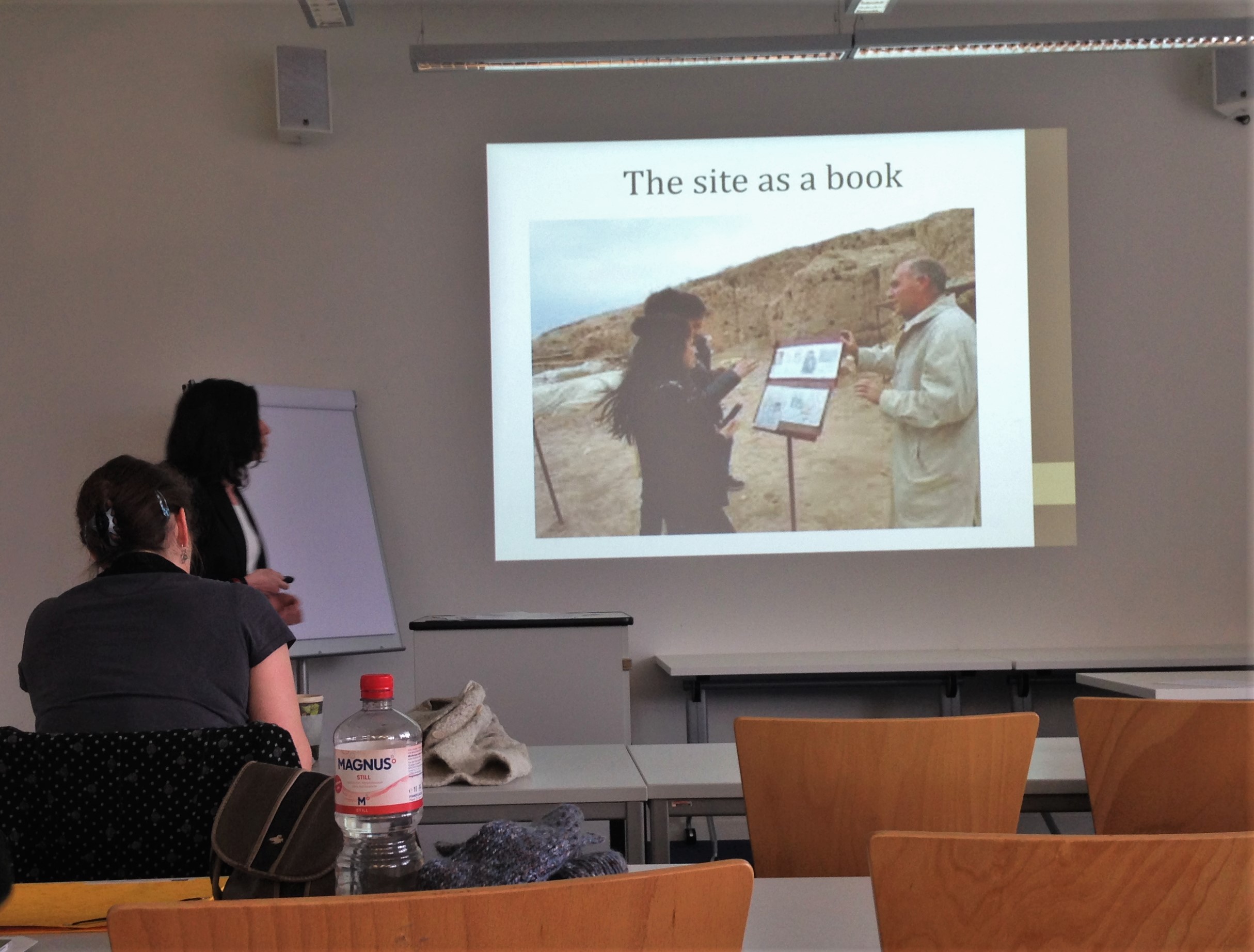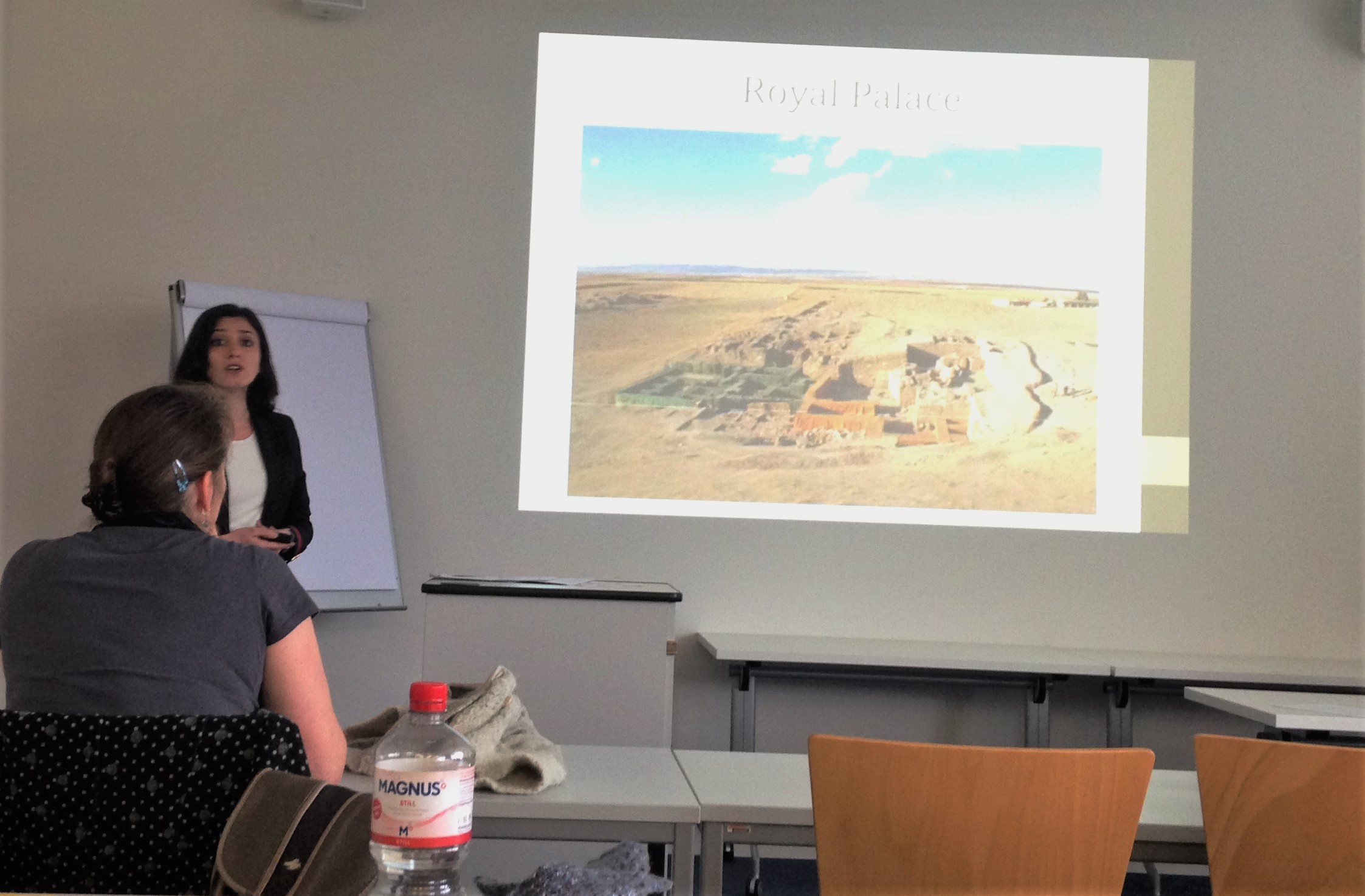What is the impact of archaeology on modern identities in Syria? Can collaborative archaeology influence the protection of the archaeological heritage, both in time of peace and war?
Tell Mozan represents a unique example of collaborative archaeology in Syria and the Middle East, which may provide an answer to these questions.
Through a keynote lecture given on the occasion of the 'International Open Workshop: Socio-Environmental Dynamics over the Last 15,000 Years: The Creation of Landscapes VI', I presented the extraordinary work carried out by the archaeological expedition in Tell Mozan, with the specific purpose of engaging local communities in a slow and organic process that started since the very first years of excavation. The workshop was an interdisciplinary space that aimed to promote discussions by merging themes. It was organized by the University of Kiel within the frame of 'Cluster of Excellence ROOTS', Graduate School 'Human Developmen in Lanscapes' and the Collaborative Research Centre 1266 'Scales of Transformation'.

The paper started with a rapid description of the historical importance of Urkesh, and of the main landmarks of the site. It then moved to focus on the principles followed by archaeologists to transform the site from ruins into 'history book' for visitors.
At Tell Mozan, the site presentation system originated from integrating conservation within the broader archaeological project. This process, developed through the years thanks to the support and the contribution of IIMAS, transformed the site into an attractive, easy-to-read archaeological site - a fact which can be considered unparalleled in the whole region. This effort constituted the basis for a whole process of an organic and collaborative archaeology. Archaeologists active on the site for years also organized a variety of activities that aimed to involve local works, in order to foster knowledge on the historical importance of the site: they therefore offered regular lectures about new discoveries, and presented the site using the local languages through panels, flyers, etc. This behaviour created a sense of belonging to the site, and also led to an increasing presence of locals to the site.

This policy led to the idea of a large eco-archaeological park which will include many activities and will bring economic benefits to locals. The planning of the Park was suspended due to the conflict in Syria. However, one of its envisaged activities resisted to the war and even bloomed to become the 'Urkesh Gate'. Indeed, this very project was at the centre of my presentation, together with its protagonists: the local women and their products.
In my talk, I could explain how the insight of the sites directors , Giorgio Buccellati and Marilyn Kelly-Buccellati, and their constant commitment to support the archaeological site by supporting the people living next to it proved to be a valuable method and turned out to be an example to all archaeologists to follow in order to conduct a proper collaborative archaeology. The results of these methods are witnessed in today's Urkesh, which is perfectly maintained by a team made of local collaborators, previously trained during the archaeological campaigns, in constant contact with the international archaeological team.
The presentation awakened vast curiosity and promoted various discussions about the ethical and professional duty of archaeologists in engaging local communities as an essential part of archaeological work itself. It also raised questions about its being a sustainable example and if this method might be followed in other sites around the Mediterranean.